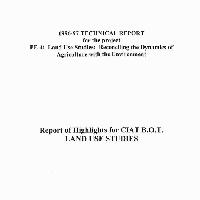Resumen
- - Hydrological features identified and quantified. - Impact of changed land use on water resources assessed. The El Angel watershed of 300 km2 is in the northern Andes of Ecuador at an altitude varying from 1500 to 4150 m. The lower range is dry and often degraded. In the central area irrigated agriculture uses water from the upper area. This is followed by a pasture/potato belt, and natural “páramo” vegetation higher up. Water is a critical resource here, being abundant in the upper area and scarce in the lower. The climate within the region changes from dry (in the irrigated crop area, about 2500 m) to humid (in the nature reserve, above 3500 m) over a distance of a few kilometers. Annual precipitation in the higher areas (1300 mm) is more than twice the value in the lower (500 mm), and evapotranspiration is much lower because of lower temperatures, higher atmospheric humidity, and abundant cloudiness. The agricultural frontier is advancing to higher altitudes where potato fields and managed pastures are replacing the natural “páramo” vegetation (a unique high-Andean grassland with some characteristic non-grass species). This creates a potential conflict between ecological services and agricultural production. The situation is representative of many “páramos” and “punas” in Venezuela, Colombia, Ecuador, and Peru, as confirmed recently during an electronic conference about high altitude Andean ecosystems (http://www.condesan.org/infoandi/foro/paramos.htm).
